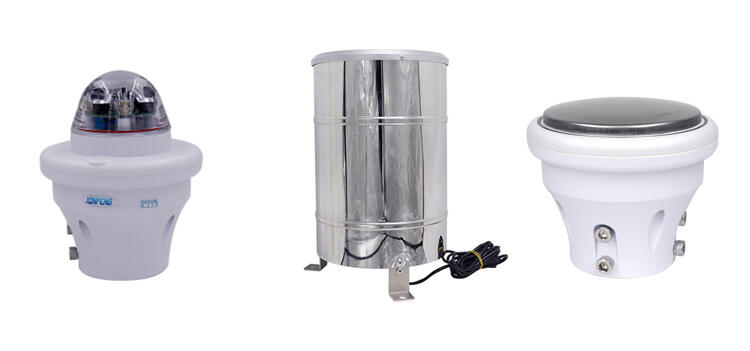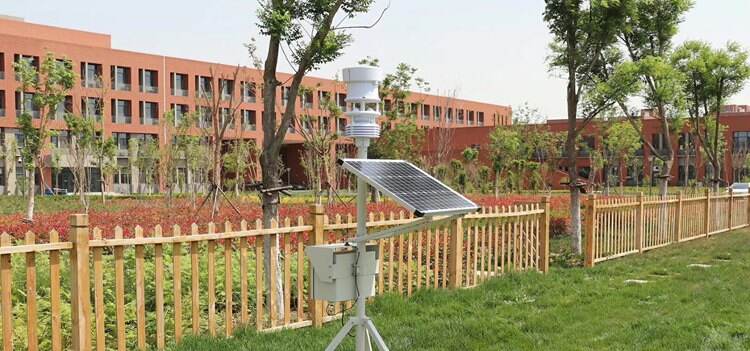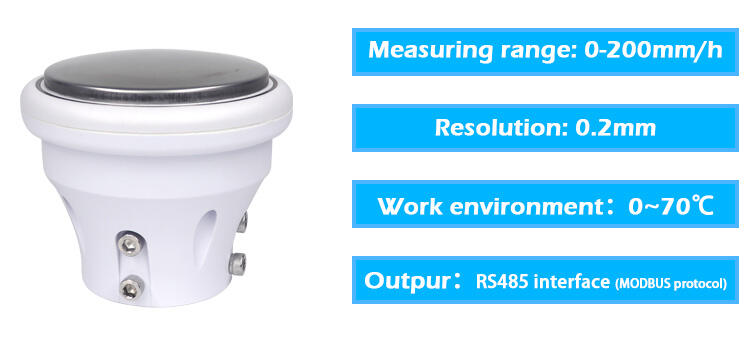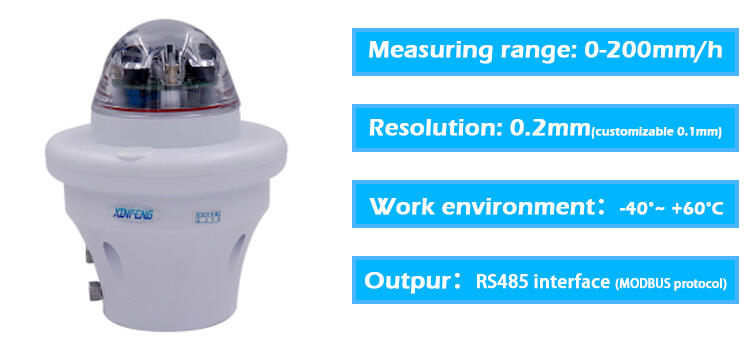A rain gauge is an essential instrument for measuring precipitation and is widely used in meteorological monitoring, agriculture, environmental protection, and scientific research. Proper placement of a rain gauge not only enhances data accuracy but also minimizes interference from wind, obstacles, and other external factors. So, how do you choose the best location for installing a rain gauge? This article provides a detailed guide on correct installation methods to help you obtain more reliable precipitation measurements.

Choosing the Right Installation Location of rain gauges
The location of the rain gauge directly affects measurement accuracy. It should be placed in an open area, away from interference sources.
Avoid Obstacles: Install the rain gauge in an open space with no tall buildings, trees, or other obstructions nearby. It is recommended to maintain a distance of at least twice the height of the nearest obstacle to reduce the impact of rain drift.
Prevent Splash Interference: If placed on a hard surface (such as concrete or stone), raindrop splashes may affect measurement accuracy. Installing it on grass or soil, or using a rain gauge stand, can minimize errors.
Keep It Level: The rain gauge should be positioned horizontally to ensure precipitation enters evenly. A level tool can be used to check and adjust its angle to prevent tilting, which may affect data collection.
(Click the image to learn more about the product)
Determining the Optimal Installation Height of rain gauges
The height at which a rain gauge is installed affects the accuracy of precipitation collection, so choosing the right installation method is essential.
Ground Installation: Typically, it is recommended to install the rain gauge at a height of 1.2 meters (about 4 feet) above the ground to minimize wind interference and allow natural precipitation collection.
Elevated Installation: For professional meteorological stations, environmental monitoring, or research applications, it is advisable to follow WMO standards, placing the gauge at a height between 1.5 meters and 2 meters (5-6.5 feet) for more representative data.
Rooftop Installation: In urban environments, some users may choose to install rain gauges on rooftops. However, roof edges or gutters can affect rainfall distribution. It is recommended to place the gauge at the center of the building and secure it with a stable mounting bracket.
(Click the image to learn more about the product)
Ensuring Stability and Ease of Maintenance of rain gauges
In addition to placing the rain gauge in an open area and at the optimal height, it is also important to ensure its stable installation.
Use a Sturdy Stand: If using a stand for installation, ensure it is structurally stable and resistant to tipping due to strong winds or animal contact.
Regular Cleaning: Rain gauges may experience measurement errors due to fallen leaves, dust, insects, etc. Regular inspection and cleaning are recommended to maintain measurement accuracy.
Minimize Human Interference: Avoid installing the rain gauge in high-traffic areas such as garden paths or playgrounds to prevent accidental damage.
(Click the image to learn more about the product)
Calibrating the Rain Gauge for Accurate Data
Even with proper installation, long-term use may lead to measurement errors. Regular calibration is necessary to ensure reliable precipitation data.
Comparative Testing: Install multiple rain gauges at the same location and compare their readings to ensure data consistency.
Check Scales and Sensors: For manual rain gauges, ensure the scale markings are clear and the measuring container is free of cracks. For digital rain gauges, periodically check if the sensors are functioning correctly and calibrate software data if needed.
Follow Official Standards: For professional applications, refer to precipitation measurement standards from organizations like NOAA or WMO to ensure data meets international regulations.
That said, most modern rain gauges require little to no calibration or maintenance, making them hassle-free and convenient!

Enhancing Precipitation Monitoring with Weather Stations
For advanced meteorological monitoring, rain gauges can be integrated with automatic weather stations, combining temperature and humidity sensors, anemometers, and other instruments for comprehensive data collection. Smart rain gauges can also connect via Wi-Fi or LoRa, enabling remote monitoring and historical data analysis.
This concludes the guide on how to place a rain gauge properly. We hope this information helps! If you're interested in the rain gauges featured in this article, feel free to contact us anytime!
Related Articles:
How does a rain gauge work? How to choose a rain gauge in different environments?
How does rainfall affect agriculture, and what role does a Rain Gauge play in farming?
Rain Gauge for Weather Station: A Key Device for Accurate Precipitation Monitoring

 EN
EN
 AR
AR
 BG
BG
 HR
HR
 FR
FR
 JA
JA
 KO
KO
 PT
PT
 RU
RU
 ES
ES
 ID
ID
 VI
VI
 TH
TH








